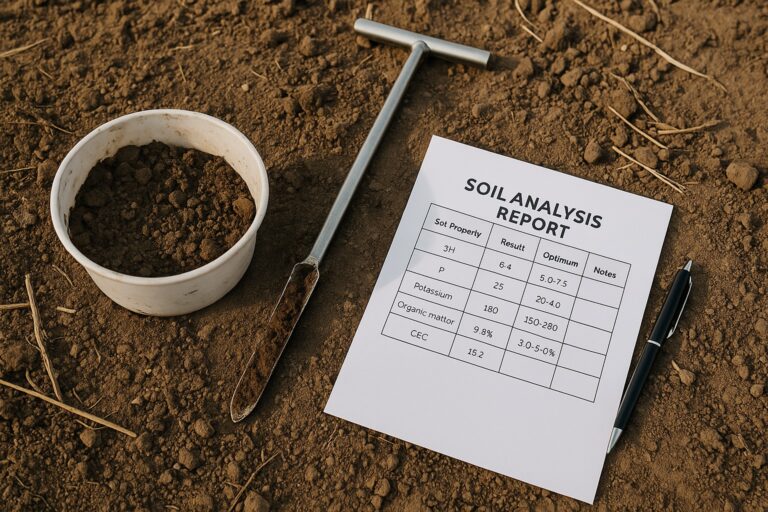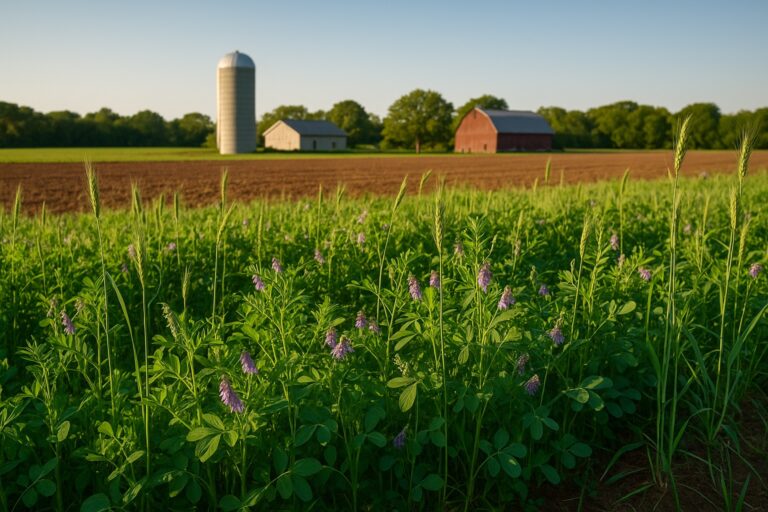Anúncios
Drought can be one of the most challenging realities faced by small and medium farmers. The lack of rainfall not only affects crop yields but also increases production costs, reduces income, and puts the sustainability of agricultural activity at risk. However, with proper planning and adaptive techniques, it’s possible to maintain productivity even during dry seasons.
Across the United States, more producers are searching for resilient farming methods that help them overcome water scarcity without giving up profitability. Whether you operate a small family farm or manage a larger property, understanding how to adapt your practices is essential to thrive under increasingly unpredictable weather patterns.
This guide will walk you through proven and accessible strategies to produce more during droughts. From choosing the right crops to optimizing irrigation and working with your community, each step has been designed to empower you with tools that make a real difference. Let’s dive in and discover what you can start doing today to protect your harvest and your livelihood.
Understand the Impact of Drought on Agriculture
Drought isn’t just about a lack of rain—it’s a complex challenge that affects soil quality, plant development, and the overall sustainability of farming operations. Understanding how drought impacts your land is the first step toward building resilience.
During prolonged dry periods, soil loses its moisture quickly, leading to compaction and reduced fertility. Crops may experience stunted growth, delayed maturation, or even total failure. Pests and diseases often become more prevalent as plants weaken, while water resources such as wells or irrigation ponds start to dry up.
Being aware of these consequences helps you make smarter, faster decisions when early signs of drought appear. Monitoring rainfall levels, soil moisture, and crop behavior are key habits that allow you to act before it’s too late.
Improve Soil Moisture Retention
One of the most effective ways to combat drought is to ensure your soil holds onto water longer. Healthy soil can store water like a sponge, giving your plants more time to absorb what they need.
Start by adding organic matter like compost or well-rotted manure to your fields. These materials increase the soil’s capacity to retain water while also improving its structure and fertility. Consider minimal tillage or no-till farming to avoid disturbing the soil, which can lead to faster moisture loss.
Another strategy is contour farming—planting across the slope of your land to reduce runoff. Simple changes in the way you prepare your soil can make a big difference when every drop counts.
Choose Drought-Resistant Crops
Plant selection plays a crucial role during dry seasons. Some crops are naturally more tolerant to water stress, and integrating them into your production plan can reduce losses and ensure a steady output.
Look for varieties that are labeled as drought-tolerant or bred specifically for arid conditions. Examples include millet, sorghum, cowpeas, and certain types of beans. If you grow vegetables, consider sweet potatoes, okra, or eggplant, which tend to require less water than leafy greens.
Rotating these crops with your regular choices can improve soil health and diversify your income sources, all while preparing your farm to handle low-rainfall periods better.
Adopt Efficient Irrigation Techniques
Water is precious during droughts, and how you use it makes all the difference. Traditional irrigation methods often waste a significant portion through evaporation or runoff, but modern techniques can dramatically reduce water usage without compromising crop quality.
Drip irrigation is one of the most efficient methods available. It delivers water directly to the base of each plant, minimizing waste and improving absorption. Soaker hoses are also a good option for small-scale farming.
In addition, watering early in the morning or late in the afternoon reduces evaporation losses. Make sure to inspect your irrigation system regularly to prevent leaks or blockages that could lead to unnecessary water waste.
Use Mulching and Cover Crops
Mulching and cover cropping are simple yet powerful practices that shield your soil and retain moisture. They also protect plant roots from extreme temperatures and prevent weed growth.
Mulch—made from straw, wood chips, or even dry grass clippings—acts as a blanket for the soil. It reduces evaporation and keeps the top layer cool and moist for longer periods. Choose mulch materials that are available locally to keep costs low.
Cover crops, such as clover or rye, enrich the soil and reduce erosion. When terminated at the right time, they return organic matter to the ground, creating a more drought-resistant environment for future crops.
Optimize Planting Schedules
Timing is everything in farming, especially when facing unpredictable weather patterns. Planting earlier or later than usual might give your crops a better chance to develop before the dry period peaks.
Keep track of local climate data and rainfall history to identify optimal planting windows. Tools like NOAA’s Climate Data Online can provide useful insights.
In some cases, staggered planting might be the way to go. This technique involves sowing the same crop at intervals so that if one planting fails due to drought, others still have a chance to succeed. Diversification in timing reduces the risk of total loss.
Invest in Water Harvesting and Storage
Capturing and storing water during rainy periods is a smart way to prepare for dry times. Whether through large-scale reservoirs or small rain barrels, every drop collected can serve as insurance for your crops.
Install gutters and collection tanks on barns or greenhouses to capture roof runoff. Use that water for irrigation, especially in areas of the farm that are harder to reach with traditional systems.
If budget allows, invest in underground cisterns or lined ponds. Just be sure to follow local regulations regarding water use and collection to avoid legal issues.
Incorporate Technology and Monitoring Tools
Modern agriculture is increasingly driven by data. Using tech tools can help you anticipate drought conditions and respond with precision.
Soil moisture sensors, weather apps, and smart irrigation systems are becoming more accessible even for small farms. These tools provide real-time data that help you avoid overwatering or missing critical windows for crop care.
Drones can also be useful for monitoring field conditions, spotting dry patches, and managing inputs more efficiently. Embracing technology doesn’t mean complicating your work—it means being better prepared.
Foster Community and Cooperative Strategies
Farming doesn’t have to be a solitary journey. Working with neighbors, cooperatives, or local agricultural groups can open up new solutions and share the burden during hard times.
Pool resources to invest in shared water storage or bulk purchases of drought-resistant seeds. Exchange knowledge on what’s working (and what’s not). Community farming programs often attract support from NGOs or government agencies.
Strong local networks can also help in marketing, logistics, and advocacy for better drought policies. Together, farmers are stronger and more adaptable.
Government Programs and Financial Assistance
There are many state and federal programs designed to support farmers affected by drought. These include grants, low-interest loans, crop insurance, and technical assistance.
The U.S. Department of Agriculture (USDA) offers several drought-specific relief programs. You can explore resources on the USDA Disaster Assistance page.
Staying informed about eligibility and application deadlines ensures you don’t miss valuable opportunities. Reach out to your local extension office—they often help with paperwork and guidance.
Conclusion
Drought is a harsh reality for many American farmers, but it doesn’t have to mean defeat. By understanding its effects, adapting your farming practices, and using available resources, you can not only survive but thrive—even during dry seasons.
The techniques shared here are more than just temporary fixes—they’re part of a long-term approach to building resilience in your farm. Remember, progress comes from action. Start small, stay consistent, and adjust as needed.
Your land, your crops, and your community depend on it. Empower yourself today to protect tomorrow.
FAQ
1. What is the best crop to grow during a drought?
Sorghum, millet, cowpeas, and sweet potatoes are great drought-tolerant options that require less water and still yield well.
2. How can I check my soil’s ability to retain water?
A simple infiltration test or soil moisture sensor can show how fast your soil absorbs and holds water. Your local extension agent can also help with assessments.
3. Is drip irrigation expensive to install?
While initial costs vary, many small-scale kits are affordable and can save money long-term by reducing water use and crop loss.
4. Can I get financial help to adapt my farm to drought?
Yes. USDA and local agencies offer grants, loans, and technical assistance specifically for drought mitigation and recovery.
5. How do I start using weather data for my farm?
Start with free platforms like NOAA or Weather Underground. Some farming apps also provide tailored insights based on your location.



